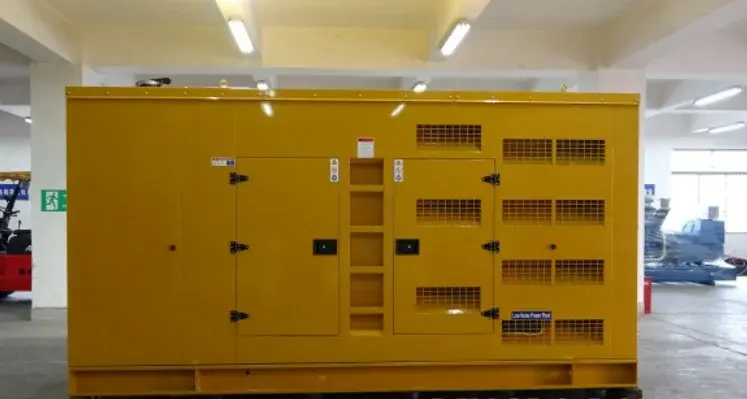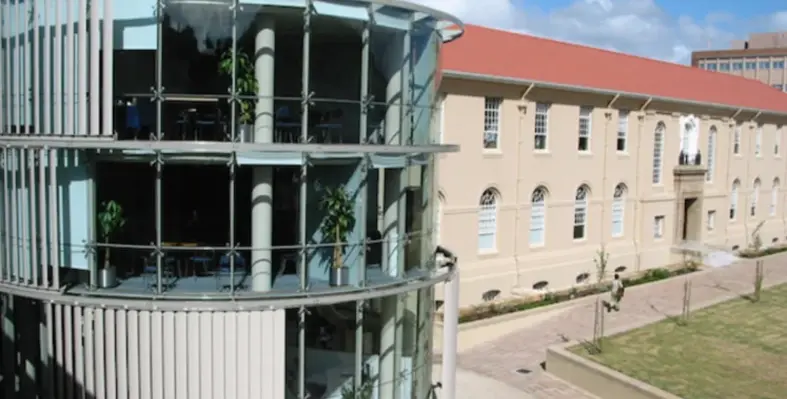Energy
Dingbo Power delivers reliable energy solutions

Designed for practical, long-duration operation. (Image credit: Guangxi Dingbo Generator Set Manufacturing Co.)
In October 2025, Dingbo Power announced the successful acquisition of an order from a valued client in Algeria for two 400kW silent diesel generator sets
The Algerian client selected these units to guarantee an uninterrupted and stable power supply for their critical operations, reflecting Dingbo Power’s solid reputation for delivering quality and performance in demanding environments. Production commenced on October 11 and has now been completed on schedule.
Engineered for excellence and reliability
At the core of these generator sets lies the powerful, fuel-efficient Shangchai 6ETAA12.8-G310 diesel engine, widely recognized for its durability and low maintenance needs. This engine is seamlessly paired with a Dingbo DB-400 brushless self-excited alternator, ensuring efficient energy conversion and steady power output.
Control and monitoring are handled by the SmartGen HGM6120CAN-4G-G controller, an advanced system offering 4G remote monitoring capabilities and a 3-phase, 4-wire mains detection signal. This setup enables smooth integration with an Automatic Mains Failure (AMF) panel, allowing the generator to automatically start during a utility power outage, ensuring uninterrupted electricity supply.
Designed for practical, long-duration operation
Each generator unit comes equipped with a 750-litre base fuel tank, tailored to the client’s requirements. This design significantly reduces refueling frequency, making the generators ideal for remote locations or areas where consistent fuel delivery cannot be guaranteed.
The system is encased within Dingbo’s custom-built silent canopy, made from 2mm thick galvanized steel sheet for enhanced protection against harsh weather and corrosion. It also effectively lowers noise levels to 75 dB(A) at 7 metres, ensuring minimal sound disturbance and compliance with environmental standards suitable for residential or urban use.
Mounted directly onto the canopy is an 800A Automatic Transfer Switch (ATS), forming a compact, all-in-one power solution ready for immediate and efficient installation.
“At Dingbo Power, we are dedicated to Powering Your World with Trust and Technology. We look forward to supporting our Algerian client and are excited to continue building our presence across Africa and beyond,” the company stated.
Industrial electrification gains momentum
Rolls-Royce and Forsee Power, a leading provider of battery systems for commercial and industrial vehicles, have entered a strategic partnership to develop advanced battery-electric propulsion solutions
The collaboration aims to accelerate electrification and the energy transition in industrial applications. The agreement was signed on 30 October 2025 in Paris, with representatives from both companies present.
Under the five-year deal, Forsee Power will serve as the primary supplier of battery systems for Rolls-Royce's Power Systems Division electromobility projects. Additionally, both companies will jointly develop advanced monitoring and analytics solutions designed to integrate seamlessly with automation technologies.
The partnership is built for the long term, with both parties combining expertise to create high-performance battery systems that meet rigorous performance standards while prioritising cybersecurity and sustainability. Rolls-Royce’s Power Systems Division seeks to drive sustainable energy adoption, reduce CO2 emissions, and enhance energy efficiency for its global customers.
Dr Jonathan Chen, senior vice-president at Rolls-Royce, said, "Forsee Power combines excellent expertise in high-voltage and high-performance systems with global manufacturing expertise and a compelling track record. This makes the company an ideal partner for us. Together, we will deliver solutions that help our customers decarbonize their applications while noticeably increasing efficiency and performance."
"This partnership between Forsee Power and Rolls-Royce reflects our shared commitment to innovation and the energy transition. Our battery systems for very demanding applications meet Rolls-Royce's requirements to focus on a battery expert when electrifying its applications. This partnership is a strategic milestone for Forsee Power. It demonstrates our ability to work with world leaders to drive the electrification of industrial applications and strengthen our international presence," added Christophe Gurtner, chairman and CEO of Forsee Power.
Phoenix signs 30MW energy deal for Ethiopian data mine
Abu Dhabi’s Phoenix Group has unveiled a 30MW hydropower-backed data mining facility at Bole Lemi Industrial Park in Addis Ababa, in partnership with Ethiopian Electric Power
It represents a key expansion milestone in Phoenix’s growth into Africa’s energy-rich markets and its long-term strategy to scale to 1GW of compute capacity.
Phoenix and Ethiopian Electric Power developed the site as part of a strategic collaboration designed to combine Ethiopia’s growing renewable energy strength with Phoenix’s operational expertise in high-efficiency compute deployments.
The 6,250-square-metre site has been purpose-built to support advanced mining and future compute workloads while leveraging stable, low-cost, and carbon-neutral hydropower from Ethiopia’s national grid, which will add 1.9 EH/S to Phoenix’s existing hashrate.
“This deployment represents a major advancement in Phoenix’s global growth strategy and marks our entry into one of the world’s most energy-rich emerging markets,” said Munaf Ali, co-founder and CEO of Phoenix Group.
“Ethiopia offers a compelling combination of renewable power, long-term energy visibility, and government partnership, all critical factors as we scale toward 1GW and reinforce our commitment to renewable energy and responsible growth.”
The East African country recently inaugurated the giant Grand Ethiopian Renaissance Dam to boost its vast hydro power potential.
Phoenix’s presence in Ethiopia also supports the country’s wider digital and industrial objectives, including investment attraction, energy export monetisation, and technology infrastructure development.
With the Ethiopian site now online, Phoenix now aims to advance toward its target milestone of 1GW aggregate capacity as it transitions from a pure-play mining model to a diversified digital infrastructure platform with future AI hosting, compute leasing, and HPC capabilities.
An IHC portfolio company, Phoenix Group is a global digital infrastructure operator and ranked among the world’s top 10 Bitcoin miners, currently with over 500MW deployed across five countries.
SA data centre deploys self-cooling rack
Phoenix adds 52MW to boost Ethiopia bitcoin mining
Raxio's DRC data centre lands prestigious certification
UCT empowers campus with next-gen power backup

New collaboration secures reliable power for teaching, research and healthcare while paving the way for clean energy integration. (Image source: Solarise Africa)
The University of Cape Town (UCT), in partnership with Solarise Africa, ACES Africa, and WEG, has inaugurated the UCT Faculty of Health Sciences Backup Power Project at its Health Sciences Campus in Observatory
The initiative aims to ensure continuous power for critical healthcare, research, and academic operations while laying the groundwork for future renewable energy integration.
In its first phase, the project introduces a 2.4 MVA Battery Energy Storage System (BESS) providing 4 MWh of storage capacity, complemented by 1.5 MVA of WEG generators. A centralised PPC/SCADA-based control system manages coordination between battery, generator, and upcoming solar components. Phase 2, now under design, will include a 171.6 kWp solar PV system projected to offset around 230 tonnes of CO₂ emissions annually once functional.
Sakkie van Wijk, co-founder and chief operating officer of Solarise Africa, stated that the project embodies the firm’s mission: “Reliable energy is not a luxury, it’s critical infrastructure. With this partnership, we are safeguarding healthcare, research, and education today, while building towards a sustainable energy future.”
“Ensuring uninterrupted operations and energy resilience across our medical campus is a strategic priority,” said Avi Dhevdath, acting director: programme management at UCT.
“This initiative strengthens the campus’s ability to sustain critical research and teaching activities, guaranteeing operational continuity and supporting UCT’s pursuit of resilience, excellence, and world-class infrastructure.”
UCT is also aligning its resilience goals with climate responsibility. “This project delivers both reliability and carbon reduction,” remarked Manfred Braune, director of environmental sustainability at UCT.
“By coupling backup with solar readiness, we reduce emissions while strengthening our resilience, precisely the kind of forward-looking investment UCT must make.”
For EPC partner ACES Africa, the project is a demonstration of practical engineering expertise.
Charl Gous, CEO of ACES Africa, commented, “At ACES, we engineer solutions you can trust. This project is a landmark in delivering resilient energy systems for critical African institutions.”
WEG South Africa, responsible for designing, manufacturing, and integrating the medium-voltage systems, substations, generators, and Energy Management System (EMS), highlighted the synergy between durability and sustainability. “Our role was to build a robust electrical backbone that meets today’s energy security needs while enabling tomorrow’s renewable integration,” concluded Eduardo Werninghaus, CEO of WEG Africa.
The partnership exemplifies a resilience-led approach with flexibility for renewable upgrades, reflecting a collective vision for energy reliability, institutional sustainability, and climate-conscious infrastructure.








